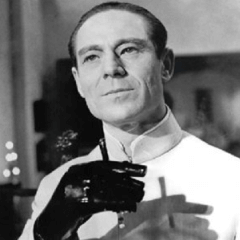Atmung
Synonyme: Atmen, Atemtätigkeit, Respiratio
Englisch: respiration, breathing
Definition
Atmung ist ein biologischer Prozess, bei dem molekularer Sauerstoff aufgenommen, in die Zellen transportiert und dort in der Atmungskette zu Wasser reduziert wird. Im Gegenzug wird Kohlendioxid produziert und abgegeben.
Einteilung
In der Medizin bzw. Biologie wird nach anatomisch-physiologischen und biochemischen Aspekten die äußere und die innere Atmung (Zellatmung) unterschieden:
- Äußere Atmung: Der Atemgaswechsel, der bei der Lungenatmung stattfindet. Dabei wird Sauerstoff aus der Umgebung aufgenommen und Kohlendioxid abgegeben. Das Produkt der äußeren Atmung ist der Atem.
- Innere Atmung: Der biochemische Prozess der Zellatmung, bei dem organische Verbindungen zwecks Gewinnung von ATP zu energiearmen Stoffen oxidiert werden.
Im folgenden wird nur die äußere Atmung besprochen. Die Besprechung der inneren Atmung erfolgt unter dem Stichwort "Zellatmung".
Anatomie
Beim Atmen strömt die Luft über die Atemwege in den Körper. Der Eintritt kann über die Mundhöhle (Mundatmung) oder über die Nase (Nasenatmung) erfolgen.
Bei der Nasenatmung werden größere Fremdkörper durch Nasenhaare im Bereich des Naseneingangs aufgehalten. Anschließend strömt die Atemluft durch die Nasenhöhle, wo sie durch die Nasenschleimhaut gereinigt, angefeuchtet und angewärmt wird. Über den Rachen (Pharynx) wird sie weiter zum Kehlkopf (Larynx) geleitet. Dort markieren die Stimmbänder die Grenze zwischen den oberen und unteren Atemwegen. Kaudal des Larynx beginnt die Luftröhre (Trachea). Sie verzweigt sich distal in zwei Hauptbronchien, dann innerhalb der Lunge weiter in zahlreiche Äste, die Bronchien. Aus ihnen entspringen die noch kleineren Bronchiolen. Um den Abtransport von Fremdkörpern zu gewährleisten, die mit der Atemluft aufgenommen werden, sind die Atemwege mit einem spezialisierten Epithel ausgekleidet, dem respiratorischen Flimmerepithel.
Am Ende der Atemwege befinden sich schließlich die Lungenbläschen (Alveolen) der Lunge, durch deren dünne Membran Sauerstoff in die Kapillargefäße übertritt und auf umgekehrtem Weg Kohlendioxid aus dem Blut an die Lunge abgegeben wird.
Weitere Details siehe: Atemwege, Kohlendioxidtransport
Physiologie
Überblick
Im Laufe der Evolution haben Tiere verschiedene Möglichkeiten entwickelt, um an den lebenswichtigen Sauerstoff zu kommen. Man unterscheidet:
- Hautatmung, bei der der Gasaustausch über die gesamte Körperoberfläche erfolgt.
- Kiemenatmung, bei der der Gasaustausch über dünne, durchblutete Hautausstülpungen, die Kiemen, erfolgt. Sie kommt bei vielen Wirbellosen und bei Fischen vor.
- Tracheenatmung über röhrenförmige Einstülpungen der Körperhaut. Sie kommt bei Insekten vor.
- Lungenatmung mit Hilfe von in den Körper eingestülpten Säcken, die als Lungen bezeichnet werden. Sie kommt z.B. bei lungenatmenden Schnecken und bei Lurchen, Kriechtieren, Vögeln und Säugetieren einschließlich des Menschen vor.
Atemmechanik
Beim Menschen ist die Atmung das Ergebnis einer koordinierten Muskeltätigkeit, die zum Heben und Senken des Thorax (Brustatmung) und des Zwerchfells (Bauchatmung) führt. Dabei entsteht ein Atemstrom, der die Atemluft durch die Atemwege in die Lunge befördert, wo der eigentliche Gasaustausch stattfindet.
Bei der Einatmung (Inspiration) vergrößert sich durch die Tätigkeit der Atemmuskulatur und Atemhilfsmuskulatur das Volumen des Thorax. Dabei dehnt sich die Lunge aus und es entsteht ein Unterdruck, Luft strömt durch die Atemwege in die Lunge. Damit die Lunge den Atemexkursionen des Thorax folgt, befindet sich zwischen Lunge und Brustkorb bzw. Zwerchfell eine dünne seröse Gewebeschicht, die aus zwei Blättern bestehende Pleura. Die Lunge wird von der Pleura visceralis umgeben. Ihr gegenüber befindet sich an der Innenseite des Brustkorbs, sowie auf dem Zwerchfell und dem Mediastinum die Pleura parietalis. Beide Pleurablätter kleben unter Einwirkung von Kapillarkräften aneinander wie zwei Glasplatten, zwischen denen sich ein Flüssigkeitsfilm befindet. Das ermöglicht einerseits die Verschieblichkeit der beteiligten Strukturen und verhindert andererseits durch den im Brustraum vorhandenen Unterdruck einen Kollaps der Lungen bzw. ermöglicht deren Entfaltung.
Bei der Ausatmung (Exspiration) entspannt sich die Atemmuskulatur wieder und die Luft strömt durch den Überdruck durch die Atemwege hinaus. Die Exspiration kann durch den aktiven Einsatz der Atemmuskulatur auch forciert werden.
Atemsteuerung
Gesteuert wird die Atmung durch das Gehirn beziehungsweise das Atemzentrum in der Medulla oblongata. Ausschlaggebend ist dabei die Reaktion von Chemorezeptoren auf den Kohlendioxidgehalt, beziehungsweise den Kohlendioxid-Partialdruck des Blutes. Übersteigt dieser einen gewissen Schwellenwert, setzt der Atemreiz ein. Rezeptoren, die auf den pH-Wert des arteriellen Blutes sowie einen Sauerstoffmangel (Hypoxie) reagieren, haben nur eine zweitrangige Bedeutung als Atemreiz.
siehe auch: Atemregulation
Atemvolumina
Bei der Atmung kann man verschiedene Atemvolumina bzw. Lungenvolumina unterscheiden. Diese Kenngrößen liefern u.a. einen Überblick über die Leistungsreserven der Lunge. Die folgenden Werte beziehen sich auf einen normalgewichtigen Erwachsenen.
| Bezeichnung | Abkürzung | Wert (l) | Beschreibung |
|---|---|---|---|
| Atemzugvolumen | AZV | 0,4-0,5 | Volumen, welches bei jedem Atemzug ein- und ausgeatmet wird |
| Inspiratorisches Reservevolumen | IRV | 2,5-3,0 | Volumen, welches nach einer normalen Inspiration noch zusätzlich eingeatmet werden kann |
| Exspiratorisches Reservevolumen | ERV | 1,0-1,5 | Volumen, welches nach einer normalen Exspiration zusätzlich noch ausgeatmet werden kann |
| Vitalkapazität | VK, VC | 4,5-5,0 | Summe aus AZV, IRV und ERV |
| Residualvolumen | RV | 1,5-2,0 | Volumen, welches nach maximaler Exspiration in der Lunge verbleibt |
| Totalkapazität | TK, TLC | 6,0-6,5 | Summe aus VK und RV |
| Funktionelle Residualkapazität | FRK, FRC | 2,5-3,0 | Summe aus ERV und RV |
| Atemzeitvolumen | AMV | 8,0-10,0 | Produkt aus Atemzugvolumen und Atemfrequenz/Minute |
Atemfrequenz
Eine weitere Kenngröße der Atmung ist die Atemfrequenz. Sie beträgt beim
- Erwachsenen 12-15 pro Minute
- Jugendlichen 16-20 pro Minute
- Kleinkind rund 25 pro Minute
- Säugling rund 30 pro Minute
- Neugeborenen rund 40 pro Minute
Klinik
Pathologische Atmungsformen
Atemstörungen werden im ICD-10 unter "Symptome, die das Kreislaufsystem und das Atmungssystem betreffen" in der Diagnosengruppe R06 zusammengefasst.
Eine verminderte Atmung bzw. Lungenbelüftung bezeichnet man als Hypoventilation, eine gesteigerte Belüftung als Hyperventilation. Eine gestörte Atmung nennt man Dyspnoe, die daraus resultierende Beeinträchtigung des pulmonalen Gasaustausches "respiratorische Insuffizienz". Steht die Atmung vollkommen still, spricht man von einer Apnoe.
Darüber hinaus unterscheidet man eine Reihe vom Atemstörungen, bei denen die Atemtiefe und/oder der Atemrhythmus in charakteristischer Weise gestört ist. Dazu zählen:
- Biot-Atmung
- Cheyne-Stokes-Atmung
- Kussmaul-Atmung
- Maschinenatmung
- Schnappatmung
- Paradoxe Atmung
- Inverse Atmung
- Schonatmung
Diagnostik
Pathologische Veränderungen des Atemapparats erfasst man klinisch durch die Auskultation der Lunge, bei der mit Hilfe eines Stethoskops die Atemgeräusche und Atemnebengeräusche abgehört werden.
Weiter gehende diagnostische Aussagen ermöglicht die bildgebende Diagnostik der Lunge (Röntgen, MRT, CT) oder die Bronchoskopie. Die systematische Überprüfung und Analyse der Atemtätigkeit bzw. -funktion erfolgt mit Hilfe der Lungenfunktionsdiagnostik.











